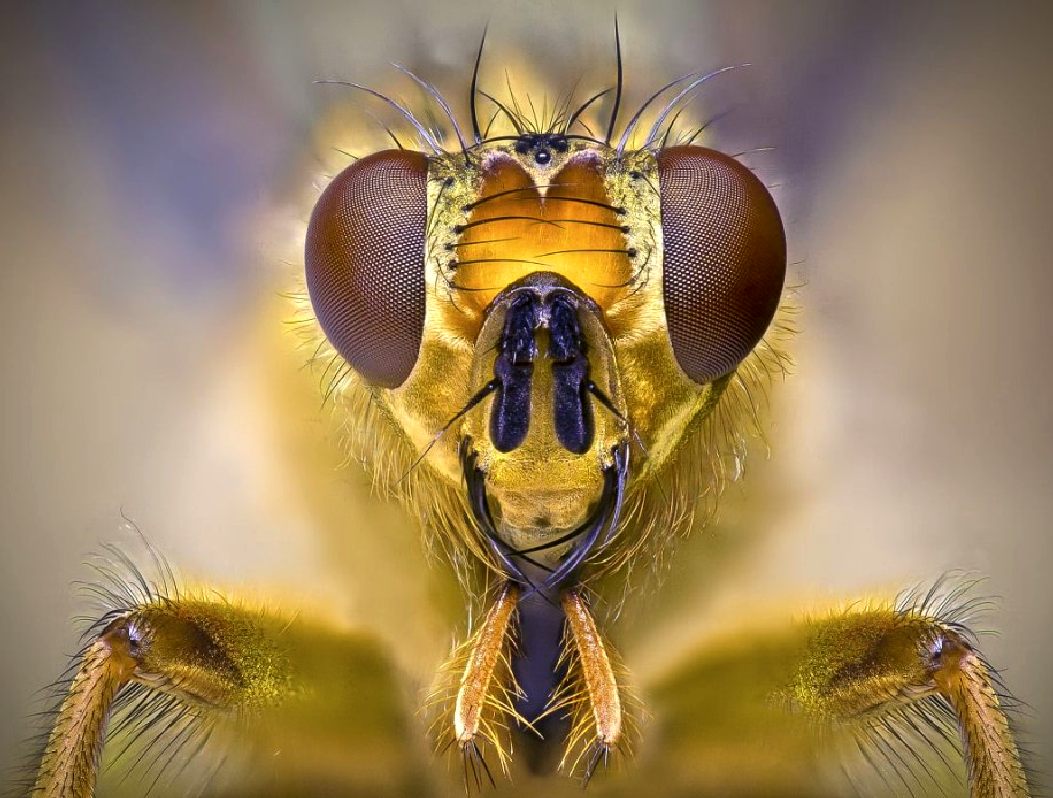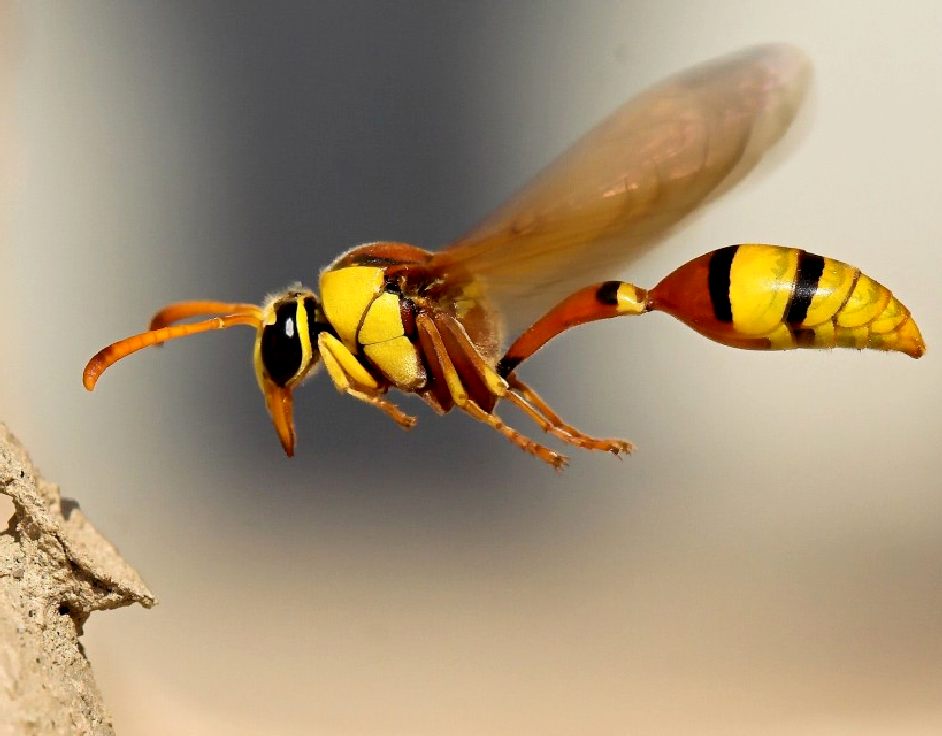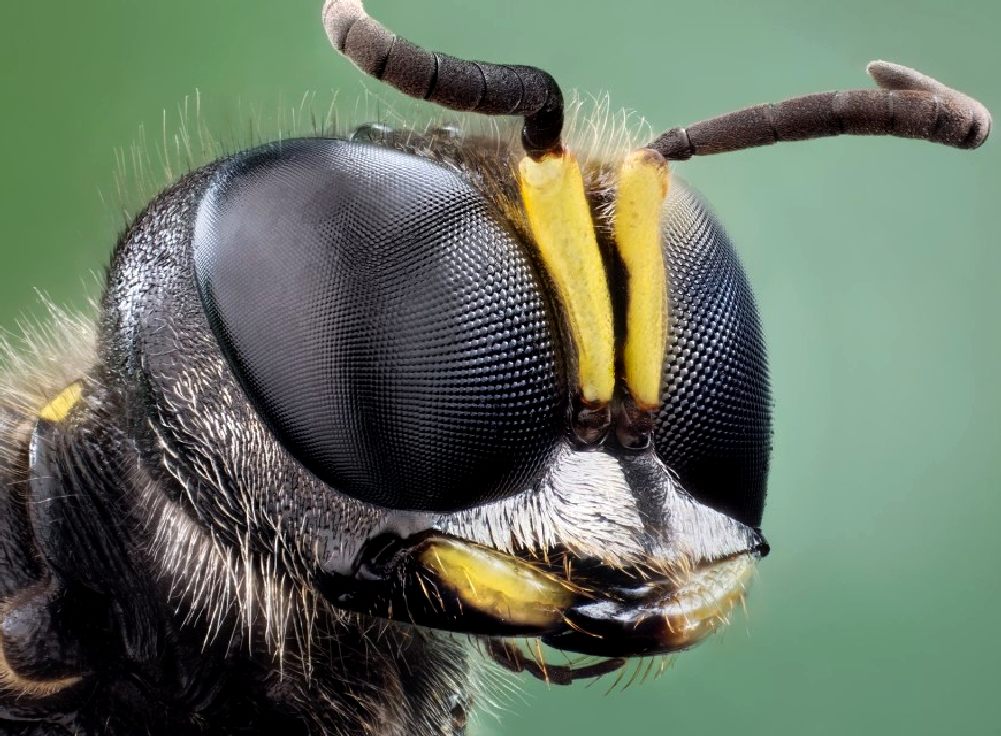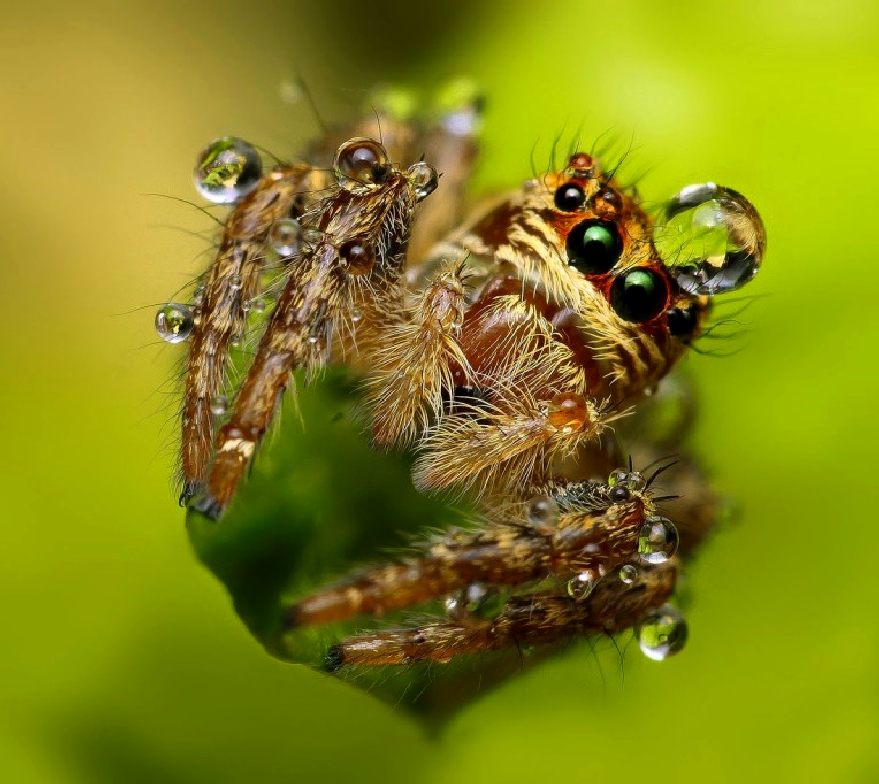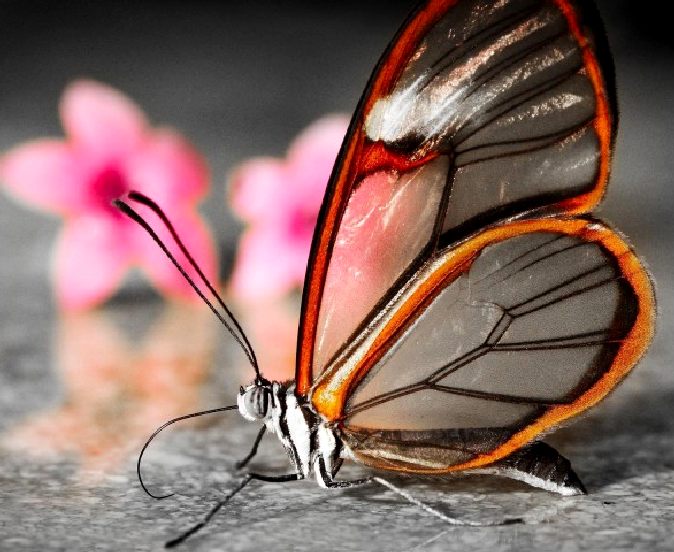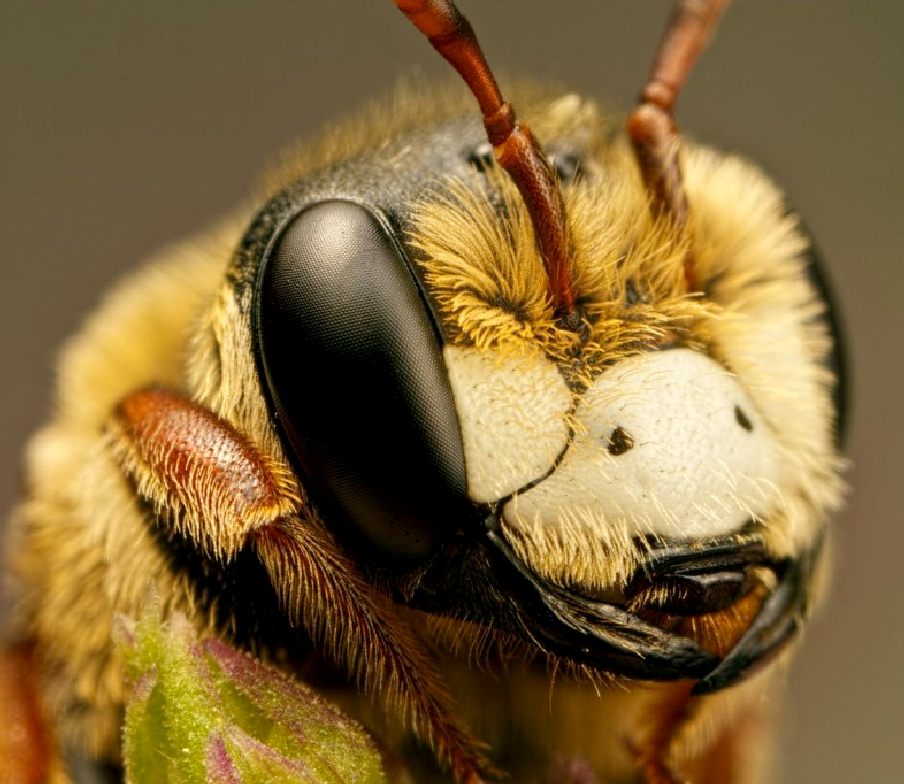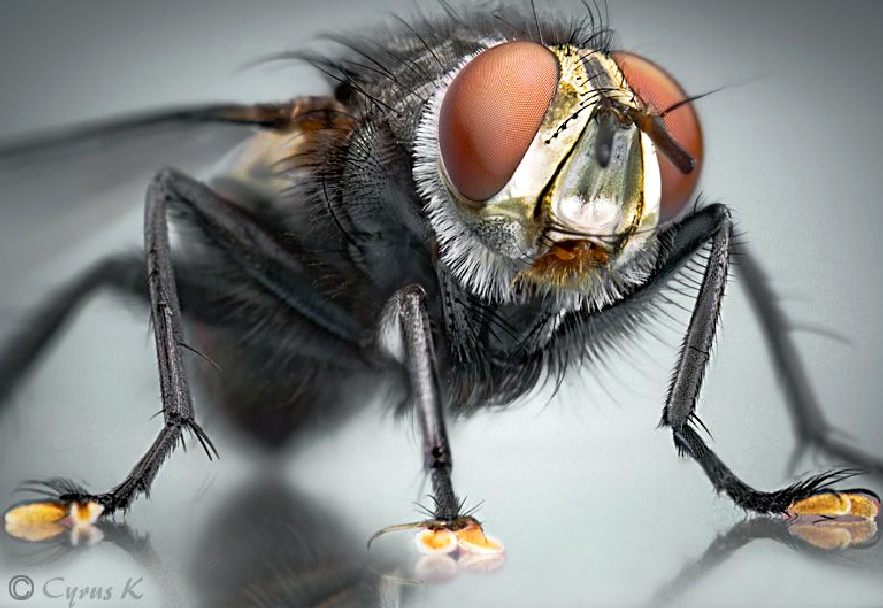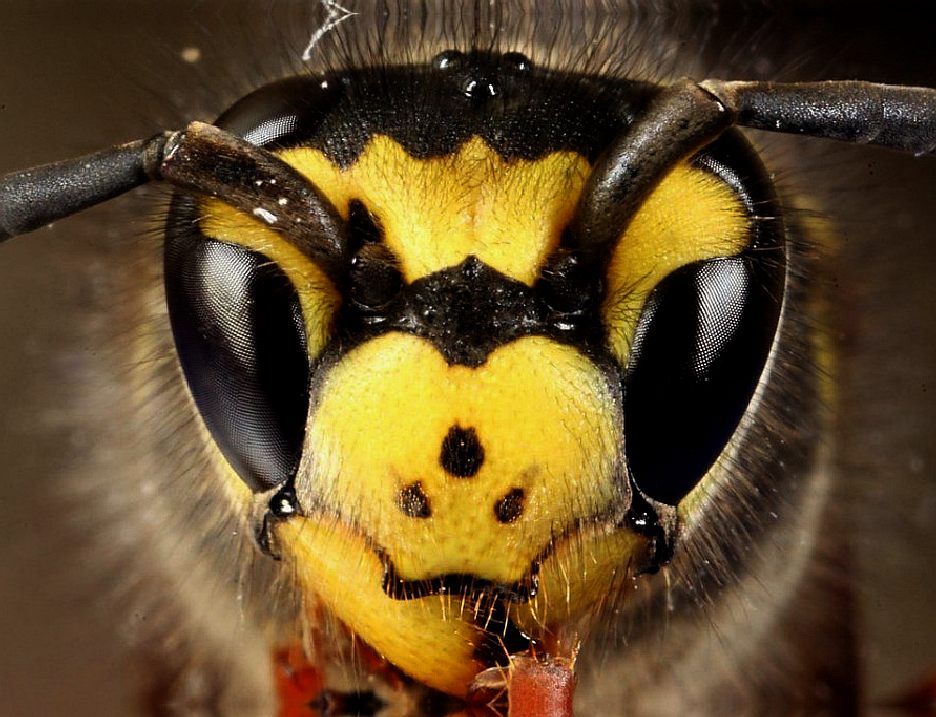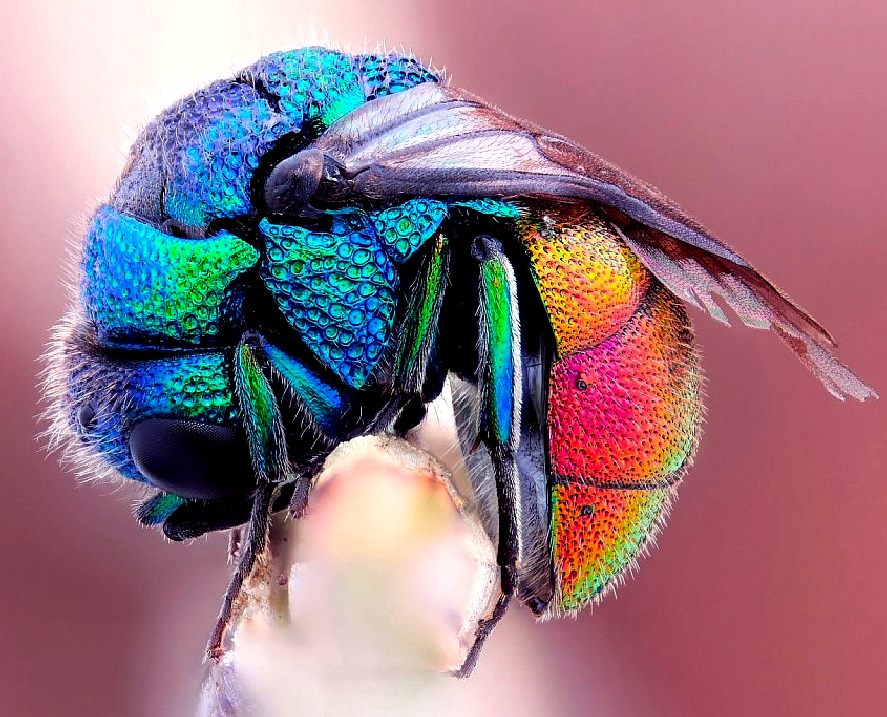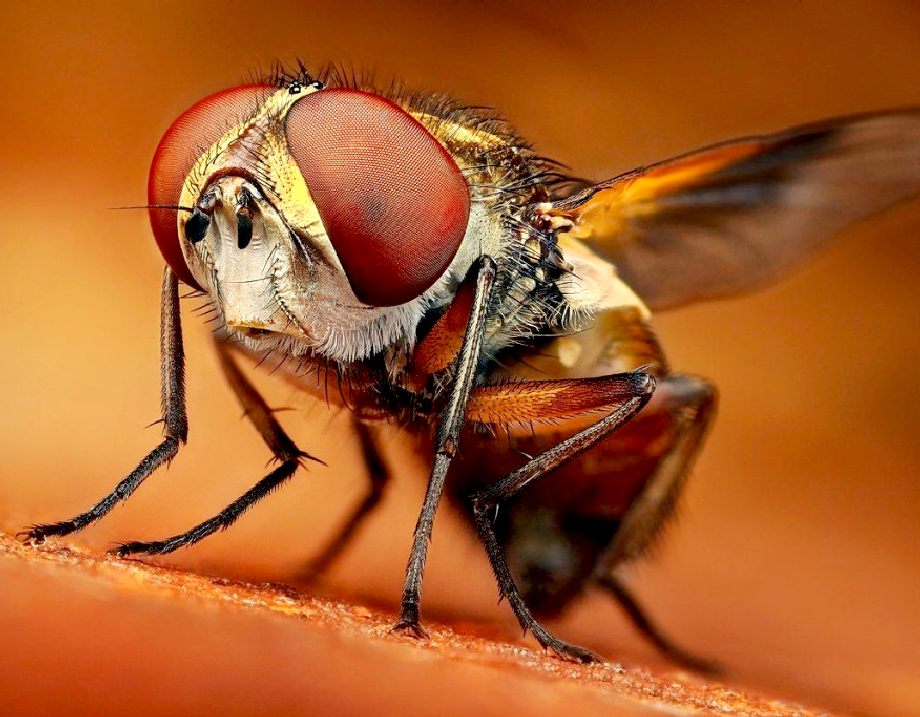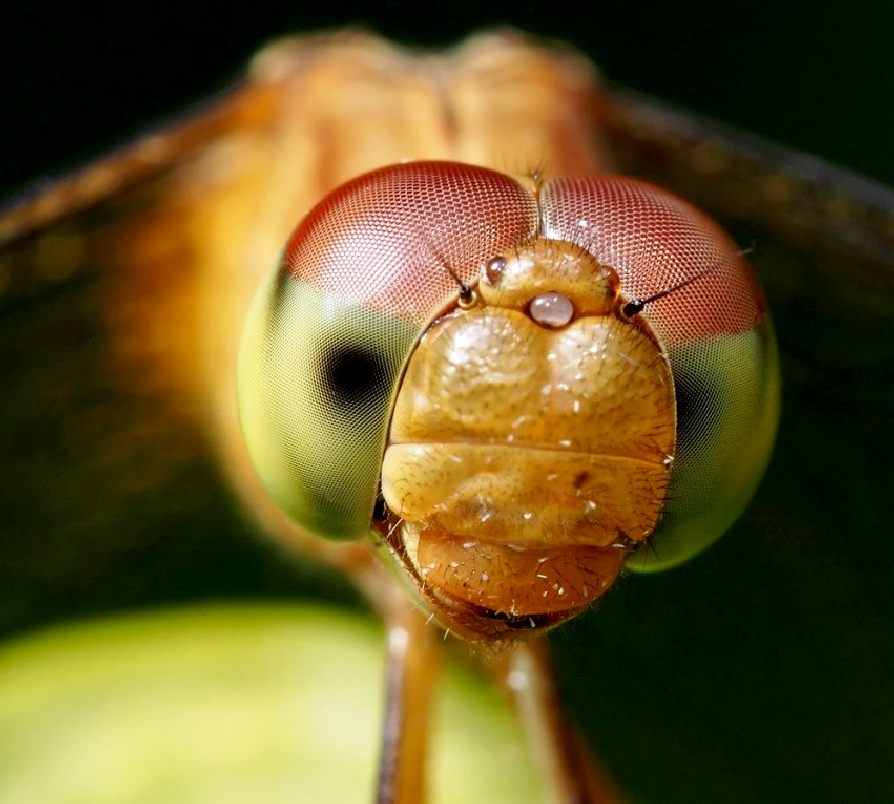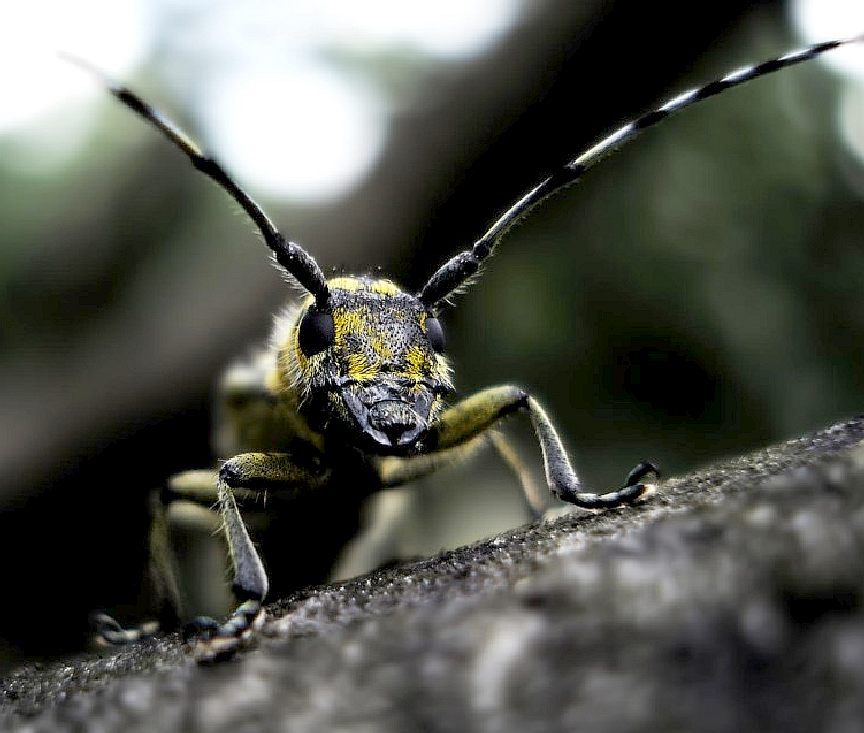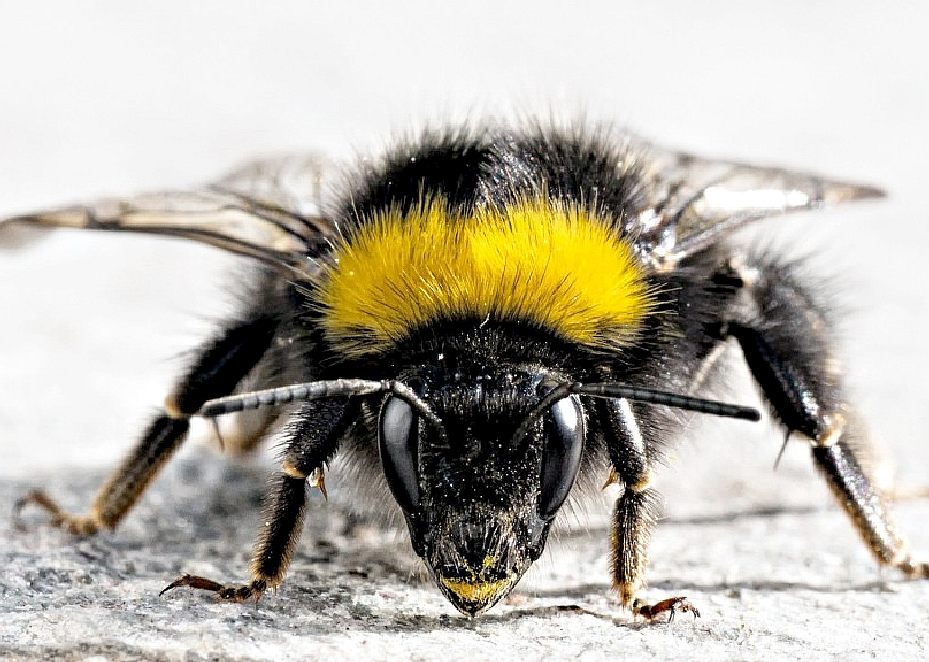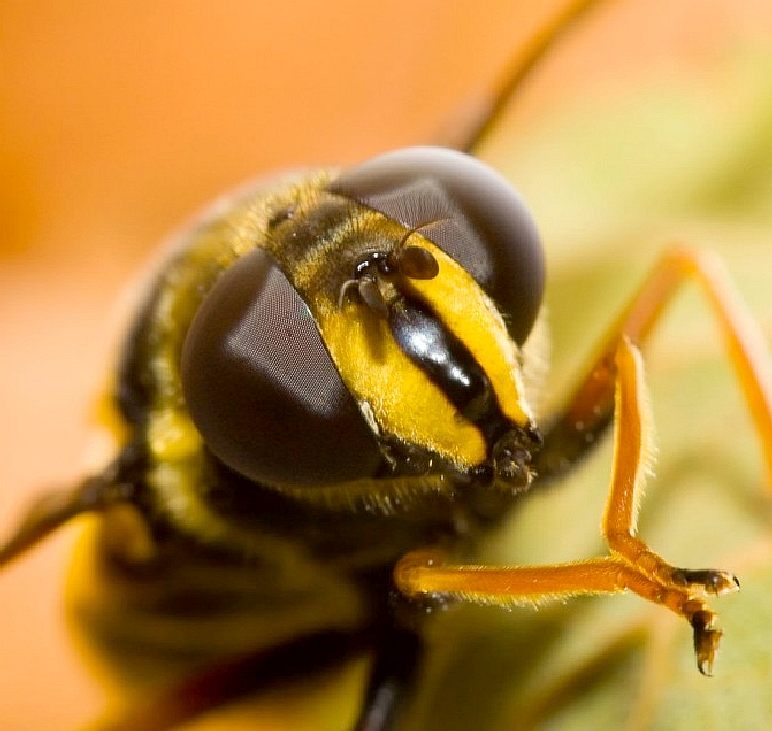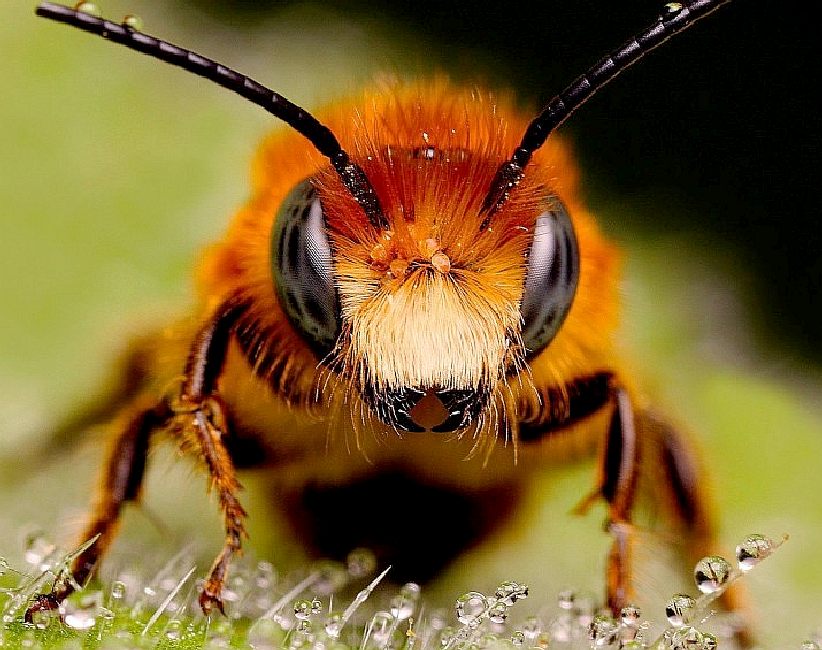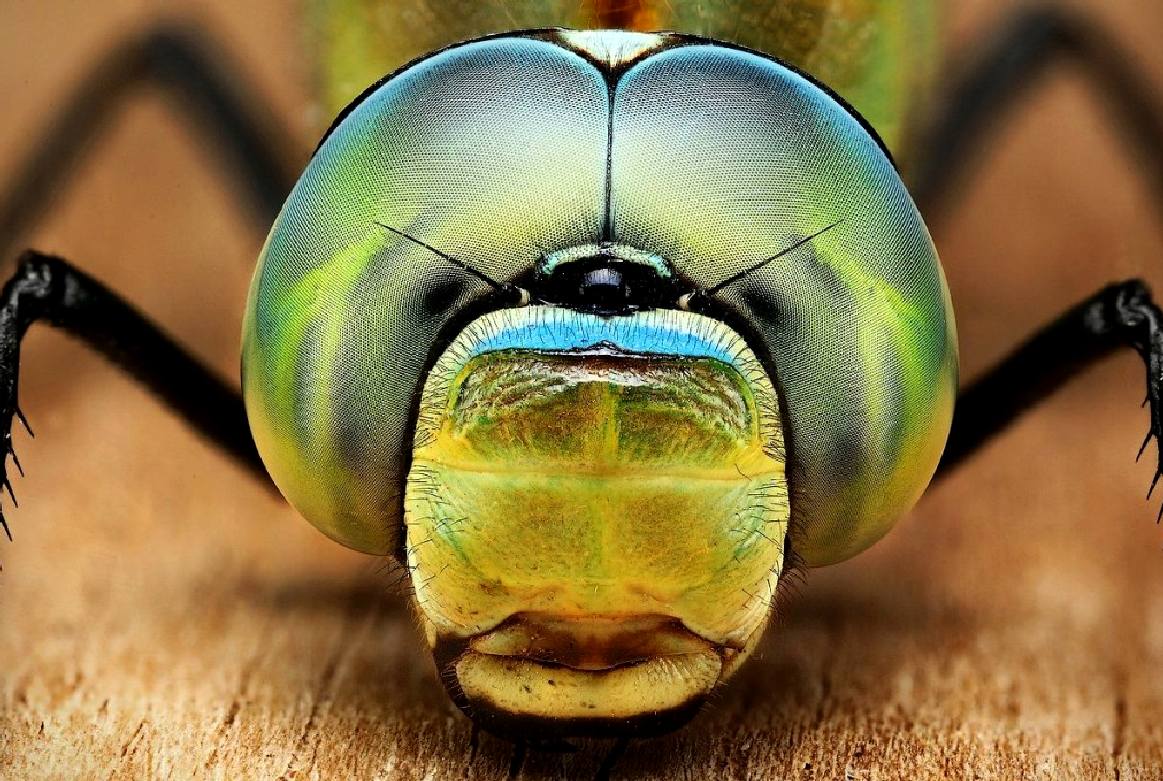|
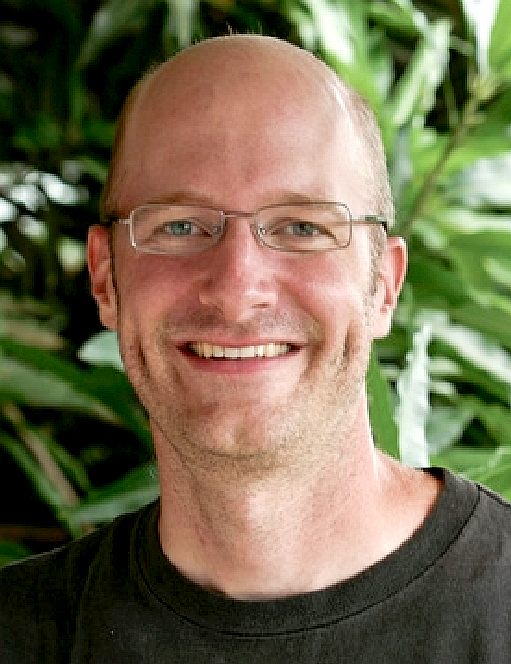
ALEXANDER
LEWIS WILD - Is a macro photographer and a biologist based in Texas.
According to his websites he started photographing insects in 2002 to complement
his scientific work on ant taxonomy and evolution. Alex holds a Ph.D. in Entomology from the University of
California (Davis) and is Curator of Entomology at the University of
Texas, Austin, USA. Alex allows non-profit organizations to license his work at discounted rates, or free of charge, depending on the context of use. Educational classroom use by students, teachers, and researchers is free of license fees, strongly encouraged, and does not require prior
permission, though he does like to be asked. If any project involves posting his photographs to the internet, images should be accompanied by a visible photo credit and a link back to his website for reference purposes is
always a good idea or you may get a threatening email from him or his
agents. Alex fights shy of copyleft and does not like Wikipedians using
his pictures. But then nobody is perfect : )
There
are numerous photographs from many well known and not so well known macro
photographers that are used to illustrate the world of insects as may
inspire animatronic artists and engineers to create their robotic
masterpieces. Indeed, photography can enhance details of a project, where
projector or other measuring techniques often fall short in this
department and using a microscope constantly is tiring on the eye. Thank heavens then for the internet and the large number of photographic
enthusiasts - and reasonably priced camera equipment - without which the
world would be a more mundane place to live in. On these pages we review
the work of some of those amateurs and professionals, who have mastered
the art. Some of the pictures are truly stunning, but as with all
photography, you have to be in the right place at the right time. Let us
know what you think of these pictures and feel free to send us any of your
own if you would like them included. In line with our not for profit
ideals, there is no charge for this service. OCTOBER
20 2011 - ENTOMOLOGY & NEMATOLOGY NEWS DAVIS
- One of the nation’s best known and talented insect photographers will speak Wednesday, Oct. 26 at the
University of
California, Davis.
Illinois-based Alex Wild, an evolutionary biologist turned full-time science photographer, will speak on “How to Take Better Insect Photographs” from 12:10 to 1 p.m., in 122 Briggs Hall in a seminar sponsored by the UC Davis Department of Entomology.
Wild received his doctorate in entomology from UC Davis in 2005, studying with ant specialist Phil Ward, professor of entomology. His visual explorations of insect natural history appear in numerous magazines and textbooks, on websites, and in museum exhibits.
Wild also runs photography workshops, teaches entomology and beekeeping at the University of Illinois at Urbana-Champaign, and blogs for Scientific American.
His work has been showcased in the New York
Times,
National Geographic and Scientific American, among others.
"I am aiming this talk specifically at graduate students," Wild writes on his blog, Myrmecos, derived from the ancient
Greek word for
ant). "Because scientists use images in
many applications - from lab websites to posters and presentations - and because cameras are so available and inexpensive, I think basic photography should be as much a part of academic training as learning to assemble a poster or a conference talk. Thus, 50 minutes on simple tips for taking better photos.”
"I do hope those of you within easy travel distance can attend," he adds.
Wild has assisted Phil Ward with Entomology 109: the Insect Taxonomy and Field Ecology course, aka (Bug Boot Camp), held every other year at the Sagehen Creek Field Station, on the eastern slopes of the Sierra Nevada Mountains, Nevada County. Wild last served as a teacher's assistant in 2002. (See photos)
Entomology professor James R. Carey plans to webcast the lecture for showing on UCTV.
By Kathy Keatley Garvey
Communications specialist
UC Davis Department of Entomology
(530) 754-6894 CONTACT
ALEX Alex Wild Photography 916 E Water
St Urbana Illinois,
61802 United
States Tel:
(520) 548-8134
Emails: alwild@myrmecos.net
myrmecos.photos@gmail.com
Facebook
Alex Wild
Twitter_Myrmecos
www.myrmecos.net 
8th
ANNUAL BIOMIMICRY EDUCATION SUMMIT - AUSTIN, TEXAS, OCTOBER 2015 A SUSTAINABLE WORLD THAT ALREADY EXISTS
- Humans are clever, but without intending to, we have created massive sustainability problems for future generations.
According to Biomimicry Institute in Montana, USA, solutions to these global challenges are all around us.
Biomimicry is an approach to innovation that seeks sustainable solutions to human challenges by emulating nature’s time-tested patterns and strategies. The goal is to create products, processes, and
policies - new ways of living - that are well-adapted to life on earth over the long haul.
The core idea is that nature has already solved many of the problems we are grappling with. Animals, plants, and microbes are the consummate engineers. After billions of years of research and development, failures are
fossils, and what surrounds us is the secret to survival. KEYNOTE
PRESENTATION 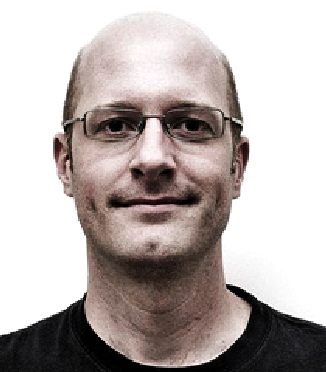
Alex Wild
Alex Wild is a professional photographer and Curator of Entomology at the University of Texas/Austin. Alex holds a Ph.D. in Entomology from the
University of California/Davis and has photographed
insects as an aesthetic complement to his scientific work for over a decade. His research concerns ant taxonomy and evolution, and his photographs appear in numerous natural history museums, magazines, books,
television programs, and other media. BREAKOUT
SESSIONS 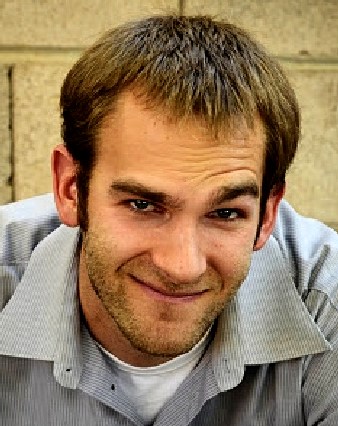
Andrew Bernier
Andrew Bernier’s research and professional work have led him to a nexus of sustainability and science education, systems theory, curriculum design, and digital media communication. He is greatly interested in the design process of shifting understanding of scientific and sustainability concepts toward relationship based understanding, rooted in concepts of systems thinking, and then how we effectively communicate complex topics. He has done this through three primary mechanisms: teaching, curriculum design, and journalism.
Bernier is a recent graduate of Prescott College’s Sustainability Education Doctoral Program, where his dissertation focus was the design and implementation of a curriculum model inspired by natural systems dynamics and molecular structures. Currently, he serves as Science and Innovation Senior Field Correspondent for KJZZ, the NPR affiliate in Phoenix, Arizona. He reports on health, sustainability, environment, engineering, and technology across the state. He also serves as adjunct faculty at Paradise Valley Community
College teaching sustainability. 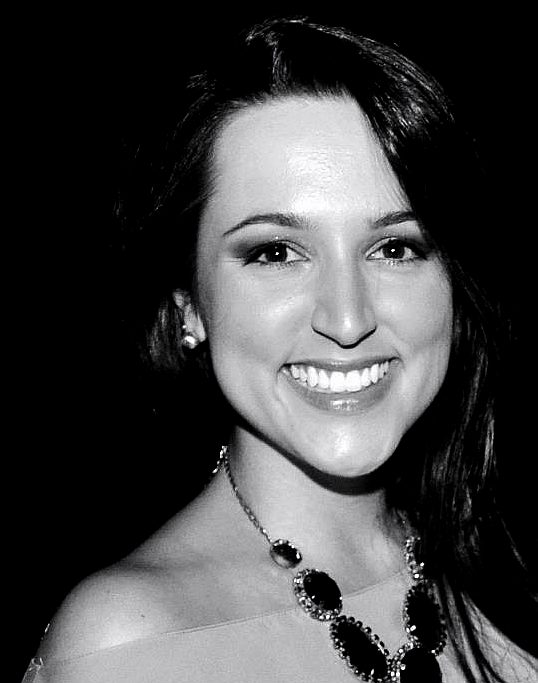
Giane Cauzzi Brocco
Has a degree in Mechanical and Industrial Engineering from Unisinos University (2012). She is a Certified Biomimicry Specialist (2013) by Biomimicry 3.8 Institute and currently enrolled in the Master’s Degree Program in Industrial & Systems Engineering at Unisinos University. Executive Director of Mercobor Industry and Commerce of Rubber Artifacts Ltd., a leading
innovation area and the research and development of products and processes at the company. Professional experience in project management and quality management. Founder and Managing Editor of Biomimicry Brasil page on Facebook and LinkedIN. Member of GMAP|UNISINOS – Research Group on Modeling for Learning – currently developing a biomimicry project at the company Samarco (in the mining sector). Experience in Systems Thinking, Design Thinking and Biomimicry Thinking. Has developed several projects in the field of Biomimicry such as a new process of sustainable injection in life friendly temperature with UV light, Industrial Environmental Indicators based on natural systems from type III through Biomimicry lens and a sensory maze for human experimentation called Insperience. Has also developed along with Perestroika (School of Creative Activities) a five days course focused on Biomimicry Thinking. 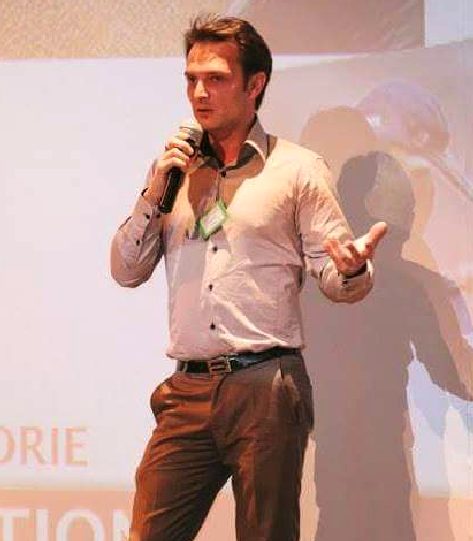
Xavier Coadic
After graduating from Aix-Marseille University with a master in biology, Xavier specialized as a counselor in sustainable development and circular economy. He is at the origin of the Le Biome project with a desire to unite Lavoisier, Darwin and Otto-Schmitt around a table. 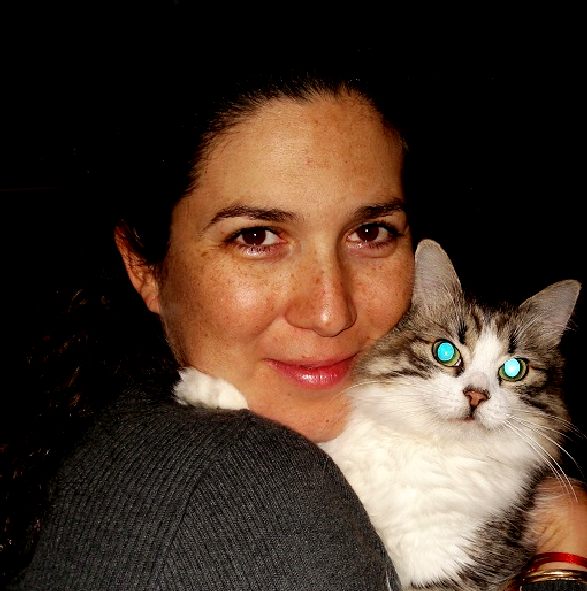
Azucena Garza
Azucena Garza has worked in the environmental field for about 20 years, participating in communication and education projects for wildlife conservation, environmental awareness and resource conservation, sustainability and, most recently, biomimicry. She has designed and facilitated workshops and short courses for students and teachers from public and private schools in
Mexico and the United States, and specializes in content development, translation and adaptation. She has collaborated with such organizations as National Wildlife Federation, Natural Heritage Institute,
World Wildlife
Fund, World Business Council for Sustainable Development – Latin America and Biomimicry Institute. She is founding partner of Punto Verde Consultores, and one of the editors of the ZQ Journal in Spanish. Azucena has a bachelor’s degree in International Studies and a graduate degree in Business Administration. Originally from Monterrey, Mexico, she lives in Austin, Texas, with her husband, their 2 daughters and Sonte the cat.
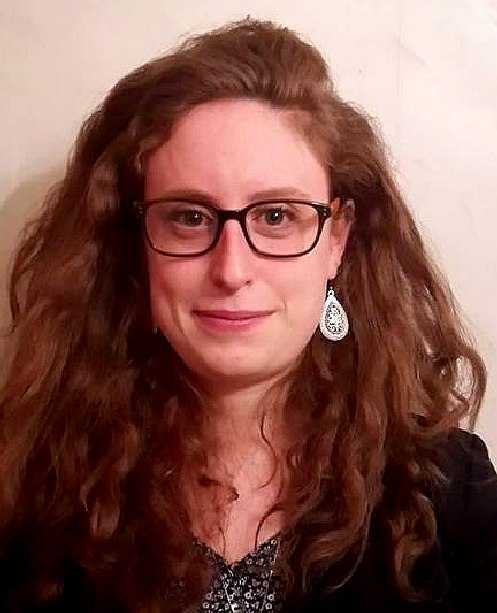
Judith Meyer
Judith graduated in marketing and sustainability, then received a training from the European center of excellence in biomimicry (CEEBIOS). Biomimicry is for her a way to rethink the world and an opportunity to practice a thousand subject. She joined Le Biome a few month ago as the third co-funder.
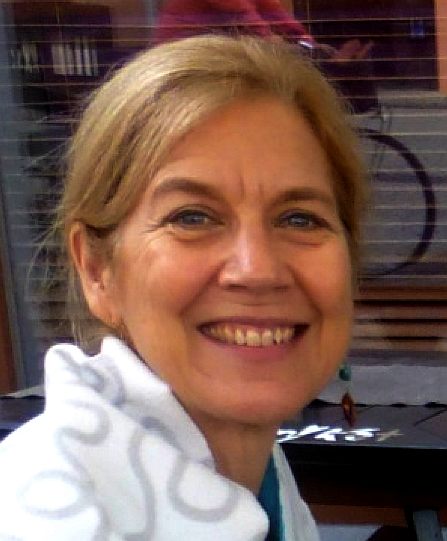
Jane Petring
Jane Petring teaches at Cegep Edouard Montpetit in Montreal, Quebec. She holds an M.A. in Applied Linguistics and English from Michigan State University and a Certificate in Translation from McGill University. She became a biomimicry enthusiast several years ago while conducting research for an environmentally-themed component of a textbook project. Since then she has made a point of integrating elements of Biomimicry into her courses and pedagogical materials. She strives to expose students and educators to important issues and empower them to make a difference. An avid
cyclist and
re-cyclist, she rides her bike daily, looks for ways for all of us to reduce our ecological footprint and encourages the public to draw inspiration from the genius of nature in creating sustainable, innovative designs.
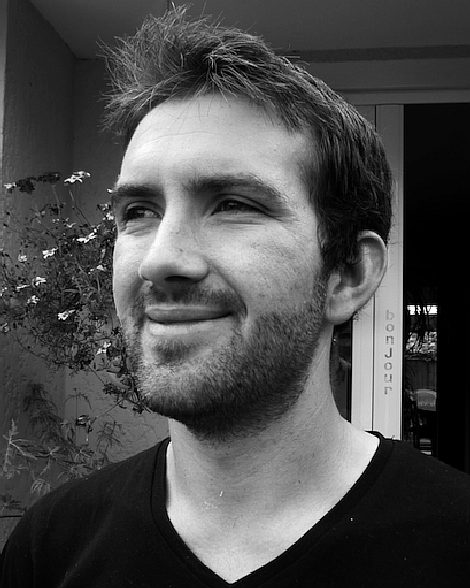
Théo Richard
Théo graduated from INSA Lyon with a master degree in mechanical engineering, he then co-funded Le Biome with Xavier Coadic following his passion for Nature and Biomimicry. For him, it is a necessity to restore its rightful place to the genius of nature and life, to carry a message of sharing,
education and curiosity.
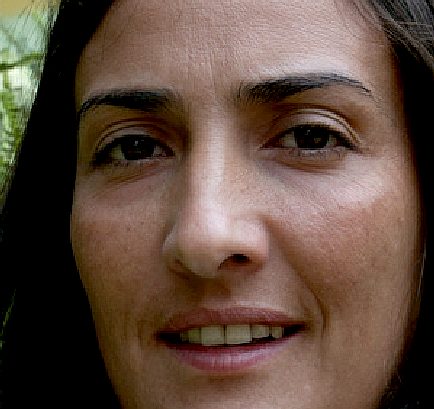
Ana Gabriela Robles
Punto Verde Consultores
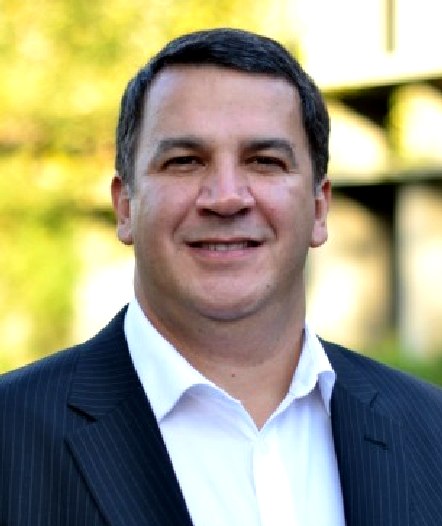
Luis Henrique Rodrigues
Degree in Business Administration from the Federal University of Rio Grande do Sul (1988), Master’s Degree in Business Administration from Universidade Federal do Rio Grande do Sul (1990) and Ph.D. in Management Sciences from Lancaster University (1994). Coordinator of GMAP|Unisinos (Research Group on Modeling for Learning) and professor in the Post-Graduate Program in Industrial and Systems Engineering at Unisinos University. Has experience of over 15 years in the area of Management and Manufacturing, acting on the following topics: Strategic Management, Systems Thinking and Scenario Planning, Operations Research (Mathematical Programming and
Computer simulation) and Theory of Constraints (TOC). Co-author of Systems Thinking Fieldbook and large national companies consultant.
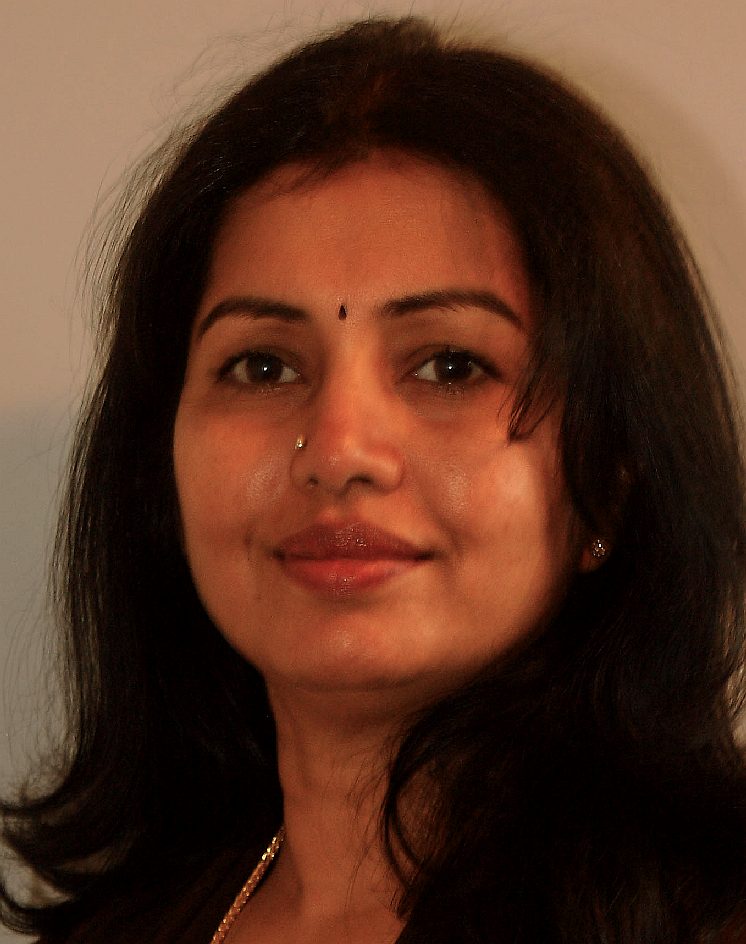
Sujatha Sampath
Dr. Sujatha Sampath is a Physicist working in interdisciplinary areas of nano-scale physics, structural biophysics and polymer physics. Dr. Sampath’s major research focus is to understand how molecular structure impacts functional material properties of natural and engineered nanomaterials. She uses high
energy X-ray and Neutron radiation from Synchrotron and Neutron sources to study and unravel the atomic and molecular structure. Her current research is in Biomimetics, studying Hierarchical Structure in
Spider Silk and Synthetic Biopolymers. Dr. Sampath is currently a Research Assistant Professor in the Department of Bioengineering at the University of
Utah and an adjunct Professor at Arizona State University.
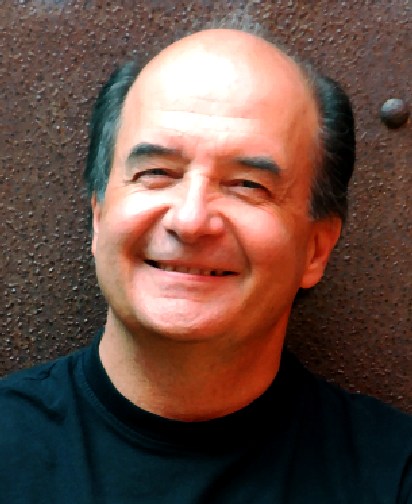
Raul de Villafranca
Raul de Villafranca, is a Mexican ecological architect with 32 years of professional practice, with ample variety of scale and type of projects, including housing, master plans and strategic connectivity plan for the Mexico-USA border. He specializes in bamboo architecture, biomimicry and regenerative design. He has been a professor at Universidad Iberoamericana Mexico City since 1979, and for the last two years at UMA Valle de Bravo in the Sustainability Public Policies, Green MBA, and Sustainable Architecture Design Master Programs. Raul is a fellow with the Biomimicry Institute and a key player in the Biomimicry movement in Mexico and Latinamerica. He has lectured and/or taught throughout the region and beyond, including Iberoamericana University, Tecnológico de Monterrey University Querétaro Campus, Universidad Autonoma de Yucatan in Mexico, Landivar University in Guatemala, Uninorte in Barranquilla Colombia, PUCE in Quito, Ecuator and Scumacher College in
England. He is also a contributor to the biomimicry journal, Zygote Quarterly, and editor of the Spanish version.
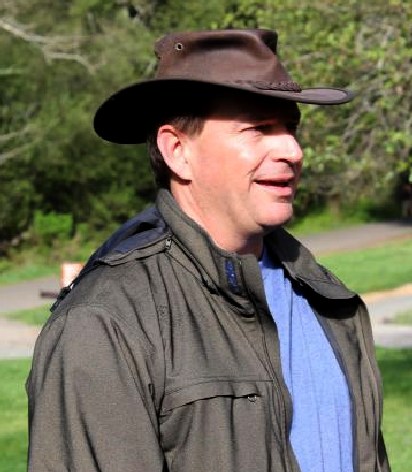
AJ Wacaser
AJ Wacaser is an ecologist, sculptor, permaculture practitioner, strategic advisor, global managing engineer, biomimicry collaboration social software entrepreneur and has worked for over 15 years with non-profit and for-profit companies.
In 2008, he launched PlanDone.com and was named by Demo.com and ComputerWorld as one of the top 70 innovative leaders in the world. As CEO, he is responsible for all of PlanDone’s brand strategy and execution. He has focused on how nature innovates through adaptive prototyping, resilient, emergent, regenerative, sustainable organizations and communities.
At the California Academy of Sciences AJ engages the public with presentations on life science exhibits. He is using iNaturalist as a smartphone app for citizen science bioblitzes identifying function to learn about and from species all around us. AJ has been also been using iNaturalist in projects for biomimicry thinking specifically for discovery of biological models in the Bay Area through biomimicry network outings.
In 2013, AJ joined the Advisory Board for AskNature.org and received his Biomimicry Specialist Certification from Biomimicry 3.8. in 2012, AJ was a co-founder of the Bay Area Biomimicry Network and in 2015, a co-founder of Coastal Redwood Biomimicry Network.
AJ holds a M.A. in Environmental Science from the University of Illinois.
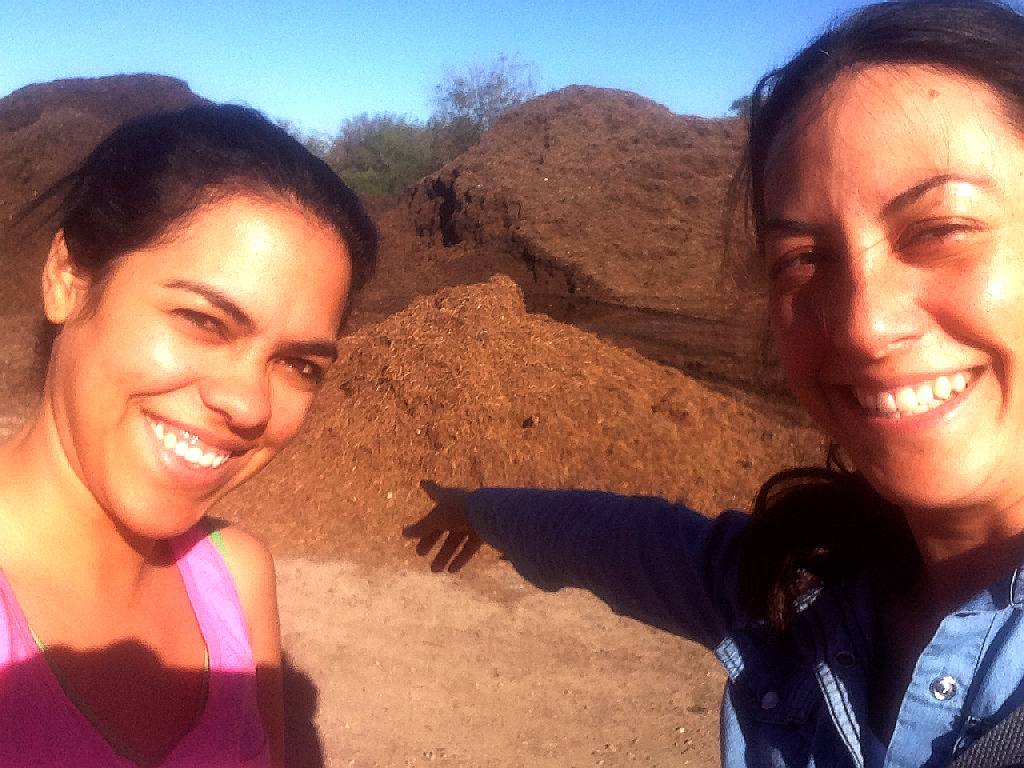
Sayuri Yamanaka
Sayuri has been designing environmental educational programs for youth and children since 1999. She has worked with Monterrey Tech, National Wildlife Federation and Fondo Mexicano para la Conservación de la Naturaleza targeting bilingual audiences in the Mexico/US border area. Sayuri has experience working with the private and public sector and act as a community organizer. She helped create the environmental education program for university students at Tec de Monterrey “Amigos de la Naturaleza”, a sustainability outreach program, and currently she is leading sustainability bilingual activities for elementary and middle school at IB schools. Sayuri lives in Austin TX, where she enjoys cooking, practicing acro-yoga with her family and moments of contemplation in nature. She feels passionate about earth stewardship and service learning.
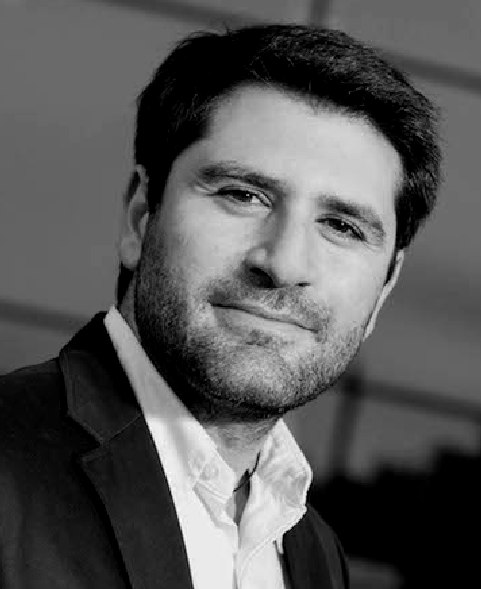
Stylianos Yiatros
Dr Stylianos (Stelios) Yiatros is currently a Marie Curie Intra-European Fellow at Cranfield University in the UK and a Lecturer in Structural Engineering in the Department of Civil Engineering and Geomatics at the Cyprus University of Technology. Prior to his election at the
Cyprus University of Technology, he was a Lecturer in Structural Design at
Brunel University in the UK.
Stelios holds a Master of Engineering (First Class Hons) in Civil and Environmental Engineering from Imperial College London (UK) where he received the Prize for the Best Final Year Project with Industrial Application in Civil Engineering. He then pursued a doctorate in the field of nonlinear structural mechanics with a scholarship from Imperial College and the Engineering and Physical Sciences Research Council (UK), which he successfully completed in 2010. During his studies at Imperial, Stelios was heavily involved in the teaching of undergraduate and postgraduate courses in Civil Engineering and in 2009 he was the first to be named the Best Graduate Teaching Assistant for the Department of Civil and Environmental Engineering. He has published articles in international peer-reviewed journals and international conference proceedings and has acted as a reviewer for high impact international journals. In 2008, Stelios and his collaborators received the
Trevithick Prize for the Best Paper in Engineering Sustainability from the Institution of Civil Engineers on his work in Biomimicry in structural design.
CONTACT THE BIOMIMICRY INSITUTE
Biomimicry Institute
PO Box 9216
Missoula, Montana 59807
United States of America
General Information: +1 415 800 1401
Facebook: https://www.facebook.com/biomimicryinstitute Linkedin:
http://www.twitter.com/asknaturetweets Twitter:
http://www.twitter.com/asknaturetweets General Information:
info@biomimicry.org
Media Inquiries: media@biomimicry.org
Website Support & Feedback: support@biomimicry.org
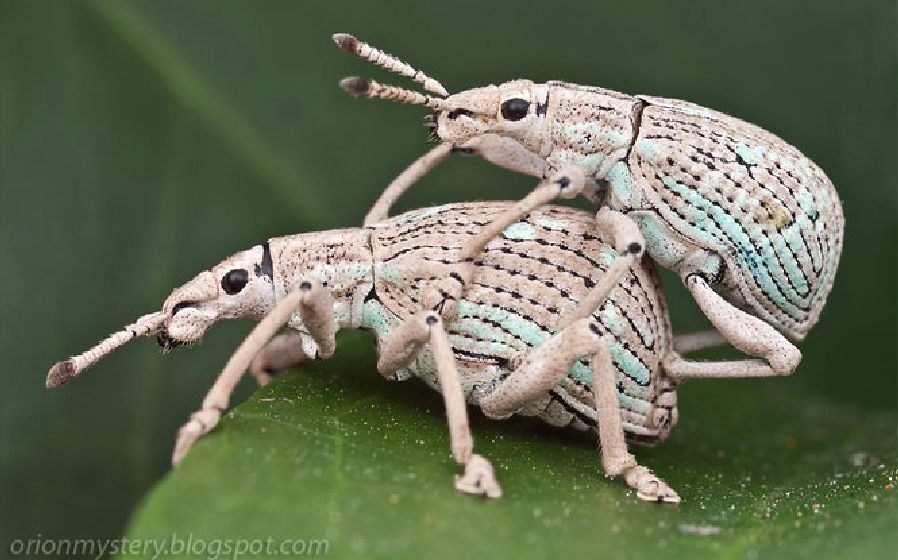
ORION
MYSTERY - Weevil, weevil rock you.
TOP
SIX MACRO PHOTOGRAPHERS ePHOTOzine - 26 SEPT 2012 ORION
MYSTERY How did you get into macro photography?
About 5 years ago, while browsing some macro images in a few local forums, I found myself amazed by the details in the insect images that we didn't get to see with our naked eyes. That really sparked my interest in macro. I bought my DSLR and a 1:1 macro lens on July 17, 2007, and started doing macro photography seriously since then. However, after about a year, I started yearning for more magnification and the Canon MP-E65 1X-5X macro lens seemed like a natural choice for me. I switched to Canon just because of this wonderful lens. I later also acquired the Canon MT-24EX Twin Flash to complete my macro rig. All my images here were shot with a Canon 40D, either with the MP-E65 and lit with the MT-24EX Twin Flash, or Sigma 150mm, with or without a 1.4x tele-converter, with natural light.
Talk us through how you set up and take a shot.
I always do my best to make my arthropod subjects look good - by giving it good light and by picking the best angles to shoot from. I could spend easily 30 to 60 minutes on one subject, even more if it's something rare. I love both full flash macro as well as natural light macro. I strongly urge that you try both if you haven't already done so!
I always shoot in RAW and process my raw files in Adobe Camera Raw, paying special attention to White Balance. I prefer my nature images to look natural and not overly saturated nor too contrasty! It helps to get the exposure to within the ball park when shooting so you don't have to push up the exposure in post processing which will result in noise. I spend around 5 minutes per image in Adobe Camera Raw, and probably another 5 minutes in Photoshop on dust spot removal and some cloning/spot healing to remove whatever that doesn't add to the image. All in all, it shouldn't take more than 10 minutes per image unless there is focus stacking (to increase depth of field) involved.
For full flash macro, I use the MP-E65 with MT-24EX as the main source of light, diffused by a DIY concave diffuser.
My typical full flash setting is manual exposure mode, F11, 1/200, and ISO100. I always shoot handheld without using tripod.
For natural light macro, I use the Sigma 150mm, mostly with a 1.4x teleconverter, on a tripod whenever possible.
What draws you to macro insect photography?
What attracted me to macro photography in the first place was insects/arthropods. Insect/arthropod macro/close-up photography has really opened up a whole new world for me. The more I get to know my macro subjects (mainly arthropods), the more I am in love with them. What started out as a hobby has turned into a great passion! I hope to promote environmental awareness through my macro/nature images. Invertebrates maybe small, but they are the majority. Without them, our ecosystem will collapse in no time!
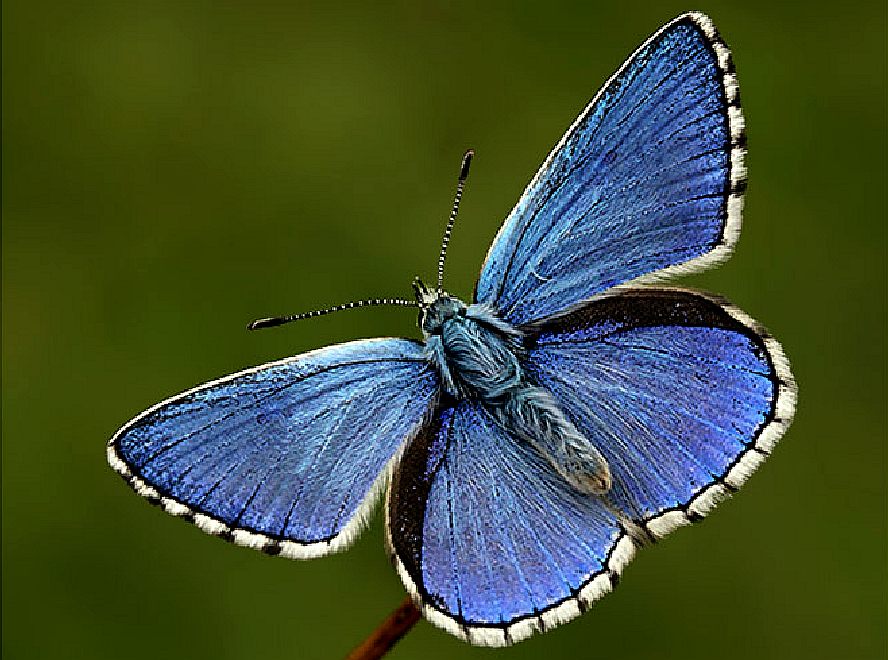
NIGEL
KITELEY
- Adonis blue butterfly.
NIGEL
KITELEY
How did you get into insect macro photography?
I first got into macro photography three years ago when I met my Spanish girlfriend Piluca, up until then I had concentrated on my main passion which was birds. Piluca is so passionate about butterflies and said I should have a go at photographing them, this coupled with the fact that there were so many wonderful butterfly shots on EPZ fuelled my interest. So in the summer of 2009 I bought a second hand Tamron 90mm lens in readiness for my first Spanish trip at the beginning of September. I also took my Canon 500mm lens on the trip in the hope of photographing the bird life, but it was the butterflies that captivated me. I think this was mainly due to the fact that I could get close to them whereas the birds in Spain are very difficult to approach. I still remember the first new species of butterfly I photographed on that trip, it was a slightly tatty Sooty Copper. The fact that it was nearing the end of the season meant that most of the butterflies we encountered were very worn, but i now had the bug (pardon the pun) and I vowed to return in the following spring.
In 2010 I decided to get serious about macro photography and purchased the Canon 100mm L IS lens. I was blown away by the quality of image I could obtain with this lens at very slow shutter speeds due to the image stabilization. My amount of "keepers" went up dramatically and this just made me more enthusiastic about photographing butterflies. Since 2009 I have been lucky enough to visit Spain on countless occasions seeing and photographing around 70 new species of butterflies,
as well as 50 or so here in England.
Talk us through how you set up and take a shot.
I find that the best times to photograph butterflies are either early morning or early evening. When I first started I would chase butterflies all over the place in the heat of the day. I soon discovered that this was a fruitless exercise as the butterflies would only stop briefly, usually to feed. As a result I find myself getting up very early so that I can be at a site before the sun rises. Once I've arrived at a site I search for roosting subjects which has mixed results depending on the species and the site. Some species such as Common Blue can be found roosting together in groups, often with two or three on the same plant or grass stem. I usually look for an isolated subject that has no distractions in the background. This isn't always possible so sometimes I will move a butterfly from one plant to another to obtain the desired backdrop. I carry with me a Wimberley plamp which I use to steady a plant or grass stem if it's windy. Roosting butterflies are usually cold and don't tend to move very much, making them easier to photograph. I try to get parallel with a roosting butterfly so as to get everything from the antennas to the tips of the wings in focus, usually with the focus point on the eye. For this kind of shot i shoot with an aperture of F8-F11 depending on how close I am to the subject.
I always shoot handheld in Aperture Priority tending not to worry about shutter speeds too much as the IS of the lens is so good. Once the sun appears and the butterflies wake up they open their wings to absorb the heat they need to take flight. When taking the open wing shots I tend to shoot with an aperture of between F14 and F18 to try and achieve a sharp image from wing tip to wing tip. These shots are harder to get right as often a butterfly won't have it's wings completely flat meaning that the wing tips will be out of focus. I tend to spend the whole day at a site, usually because I've travelled a long way to be there but also because by late afternoon the butterflies are calming down and by early evening they begin roosting again, giving me more photographic opportunities.
What draws you to insect macro photography?
For me the macro photography has taken over from the bird photography as my number one passion. I love the fact that I can get up close and personal with the subject, not only from a photographic point of view but also because I get to see the amazing details that I would probably otherwise
overlook. 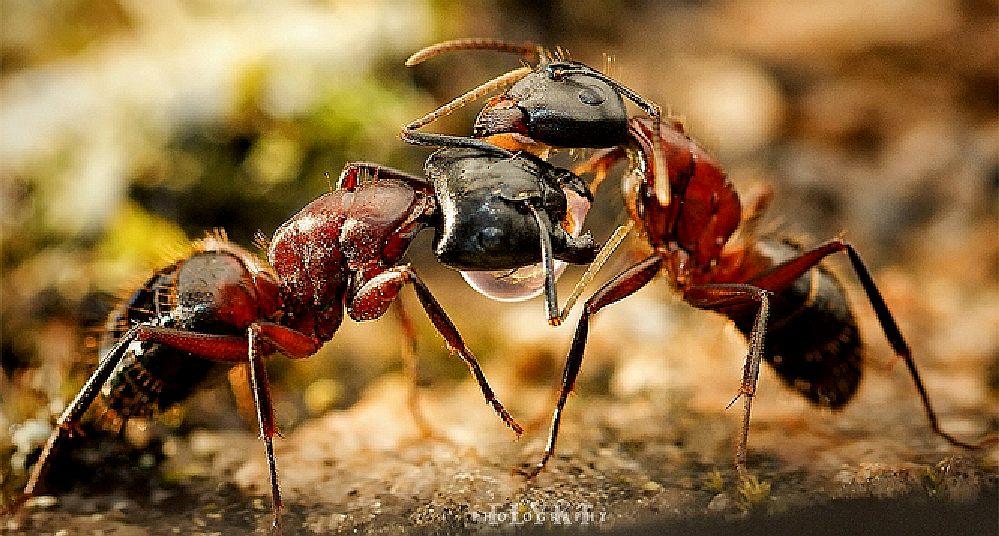
FLYKT
- 'Trophallaxis drop'
FLYKT
How did you get in to insect macro photography?
It all started in the summer of 2011 when my husband, who works as a portrait photographer, gave me a camera and showed me some truly amazing macro images of ants from the Russian site www.35photo.ru. I was so fascinated by these pictures and decided that one day I would also succeed in taking such great photographs.
I did not know, then, what I had gotten myself into! Ants are really hopeless small models. They run around, completely aimlessly, and are extremely difficult to get a sharp image with for a beginner like me. But with a great stubbornness and even greater patience, I began to get better and better images.
There is always something exciting happening when you look at ants. They are extremely rarely still. They always seem to be frantically tweaking with something, but sometimes you can see them stay up in "chaos", to be completely calm, quiet and preen themselves or each other. It is so uniquely special to see them like that! I have also seen when they feed each other with 'nutrition liquid' (so called trophallaxis, when adult ants can't eat solid food). One of my "Trophallaxis pictures" was published in the Nordic National Geographic's July number (2012) as the winner of the competition "Monthly best picture"!
Talk us through how you set up and take a shot.
I catch my ants and other insects in the garden outside the house where I live. I just take them home to photograph, and always let them back where I found them. I usually use a black deep dish which I fill with water. In the middle of the dish I put a stone, flower, branch or similar that I find. Then I set up a background. It can be a paper that I painted in watercolour, or a flowerpot. I use an external flash and use a piece of white paper as a reflector. Then when everything is in order, I let the ants on the "island" in the middle of the dish. This way they can't escape as easily as they do not like to swim. I think that's good, because I'm ironically a little afraid of ants and insects. They can actually bite! Once this is done, the fun begins-photography!
What draws you to insect macro photography?
I'm drawn to macro photography because you get to see such details on a small insect that you can't see with the naked eye. To see them in large format is very exciting. And the higher the resolution, the more fascinating they are. I also very much about managing to get the insects "personally" so to speak. To be more than "just" an insect among billions of others. Overall, it's probably the challenge of catching these small insects on the image, with good sharpness, interesting environment and in a storytelling perspective that makes me love the challenge of it all. 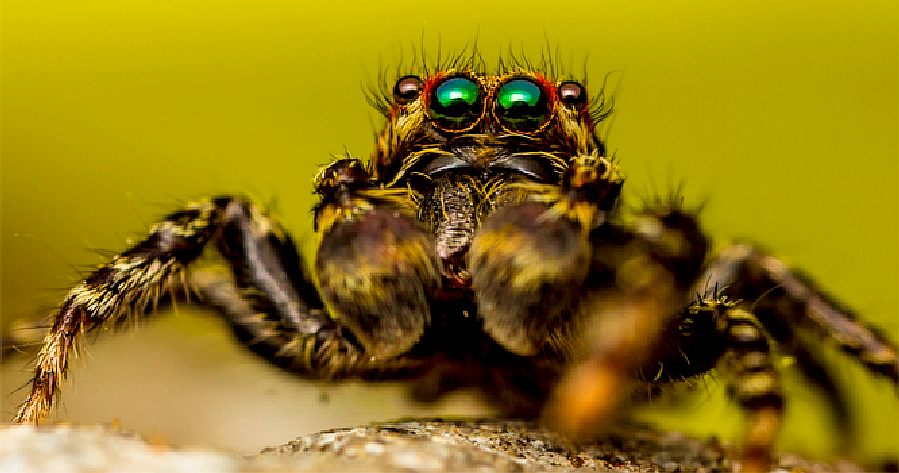
PHIL
GOOD
- 'Jumper with awesome eyes'
PHIL
GOOD
How did you get into macro photography?
I brought my first DSL camera 600D in June 2011, as I have always wanted to get into photography as a hobby. I love all nature. I wanted to be able to take photos of bees in flowers and the like, so I researched how to capture them. I brought the canon 100mm 2.8 L IS USM macro, and what a fantastic lens! I was on such a steep learning curve, not only with the camera but the stunning interesting and fascinating world of macro photography. I was lucky to have some time on my hands to really throw myself into learning the so many different skills in macro, and I'm still learning.
Macro photography has opened up a whole new world to me. From learning the facinating world of insects, to being able to get close, to see the beauty and the behaviour of this miniture world, and now able to capture it. I love capturing things that people don't or can't see, to share the images and also be inspired by other's great work.
I soon upgraded to a full frame camera and more gear! I wanterd to get closer and capture tiny insects, get up close and personal, to see and capture inscets eyes, mouth parts etc. I find it just so fasinating.
Talk us through how you set up and take a shot.
My most used lens is the canon MP-E 65mm 1-5 x macro, it takes you from 1.1life size to 5x magification. It's a hard lens to get used to, but can produce some awesome results, another steep learning curve!
I like to capture an interesting shot, rather than a record shot. I try for something a bit different, so I'm always in the garden or out in the countryside doing a David Bellamy in the shrubbery!
My basic set up would be a Canon 5D mkIII, Canon MP-E, and a Manfrotto 190 CX pro3 tripod. This is a great tripod with a moveable column which really comes in handy to get down very low. I do hand held sometimes but it's best to use a support as camera shake is magnified in macro. In the macro shot it has to be focused well and sharp as depth of field is so limited. I use quite a bit of flash, but this needs to be diffused as normal flash can be to harsh. Lighting in macro is another steep curve! It is a lot of trial and practice with lighting to get right. Natural light can be best at times, but shadows and cloud need a fill in flash at times, using a flash can up the shutter speed and use a better aperture for more depth of field.
Live view can be a great help to focus on tiny subjects, the eyes do get strained at times!
What draws you to macro photography?
Macro takes lots of practice and patience, lots and lots of more practice and patience, but it is so worth it to capture some amazing and interesting images. I hope this will inspire others to try macro and open up a fascinating world in close up photography.
The good thing about macro is that it can be done in the garden. There are insects everywhere, it's just finding them. Getting them to keep still is very frustrating. You get everything right, finger on button, and they fly off, or you point the camera at them and they just turn away, most of them are camera shy! So it's a slowly slowly approach, and sometimes it's nice when they just sit there and pose. There are lots of techniques in macro photography, but that's the fun, always something to learn. Happy shooting!
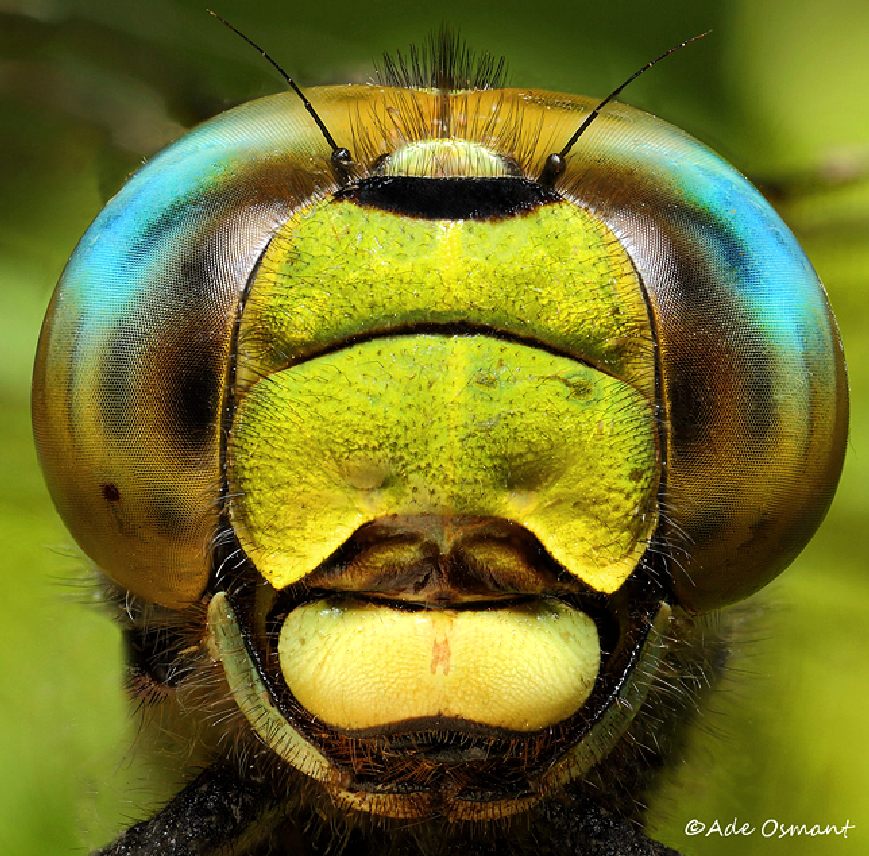
ADE
OSMAN
- 'Southern Hawker Dragonfly'
ADE
OSMAN
How did you get into insect macro photography?
I always had an interest in Entomology ever since being at school, and it just combined well with my other passion, photography.
Talk us through how you set up and take a shot.
Depends pretty much on what the subject is really, but before even setting the cameras up I will always try and visualise how I want the end image to look. This can be very difficult to do when shooting out in the field because you have to factor in distractions such as weather, light, leaves, twigs and other debris, plus of course you never quite know where the subject might land or be found in the case of flying insects. This is why I now shoot about 50% of my work in studio conditions, it gives me much more control both over the shooting conditions such as the light and the weather and of course the subject.
So a typical day if I'm doing studio work, (which incidentally is my garden shed) is to first go out and catch the subjects, this can be done using a variety of different insect traps, such as moth traps, butterfly nets, beating trays and just simple insect collection pots. I try not to kill anything I catch, there's no need, most insects can be kept quite calm simply by placing them in the bottom of the fridge until required.
So as an example say I'm shooting a moth (my favourite), 10 minutes prior to shooting I'll place the specimen in the fridge to cool down naturally as it would in the wild. Because it's been chilled beforehand the benefit is two fold, firstly it gives me plenty of time to set up the scene as I wish and secondly because the subject has been cooled it will take time before it fully warms up again to a point where it's liable to fly off. Once the scene is set up, I then move the subject using all the care necessary into the position I want, then it's just a case of shooting away until the moth warms up and starts moving again. At this point I normally release the moth back into the wild unharmed, alive and well.
My set up for use in the field is very conventional, although I do prefer to use an aluminium tripod purely because the increased weight makes it very stable and being a bit of a man mountain it's a lot stronger than the lightweight carbon fibre models available, I learnt that the hard and costly way. I have several different macro lenses available for me to use, that's the nice thing about having three photographers in the family. But my favourite weapon of choice is the Tamron 90mm Sp Di, I just prefer it over other lenses because of the very large focussing ring, really helpful if you mainly focus manually as I do. I trust my eyes more than the camera and only ever use auto when I'm in a rush trying to grab a shot of a flighty butterfly. I also use a Canon MP-E 65mm f/2.8 1-5x macro, this is a real specialist piece that offers x5 magnification of life size, great for doing the really small stuff. It's an expensive kit which offers no auto-focus. The results from it are astounding, but it's very much a lens for the serious amateur or professional as the learning curve with is incredibly steep and it not easy to use.
My advice to anyone seriously taking up macro imaging is to take your time and don't rush, precision is the key, work slowly but methodically, make sure everything is locked down and still before firing the shutter. Use Mirror Lock Up if your camera has this facility. Everything has to be completely still, because camera shake is your worst enemy when working with macro lenses, more so if using low shutter speeds, I rarely use ISO above 100, because I want maximum quality, therefore I have to use slow shutter speeds or artificial lighting. I also want good depth of field and sharpness so normally shoot at f8-11, sometimes though I will go right up to f16 because I want everything to be in perfect focus.
What draws you to insect macro photography as a medium?
Insects to me offer a glimpse into a world we rarely see with the naked eye, especially at magnifications larger than 1:1 life size. What might look like a simple black bodied beetle can in fact when magnified be a multi coloured, completely alien monster that's better adapted to it's own environment than we could ever wish to be and what's more it can fly if has a desire too. Without insects we simply wouldn't exist and if we did, we'd all be up to our necks in detritus and excrement. They are fascinating creatures that come in all shapes and sizes, from great big dragonflies the size of your palms and even larger, to tiny microscopic fairy-flies that measure 0.008 of an inch. I can never understand folk who rave about going on safari to some hot African country and spending a small fortune doing
it...... I go on safari every time I go through the back door into the garden and the only piece of luggage I need take is a magnifying glass! 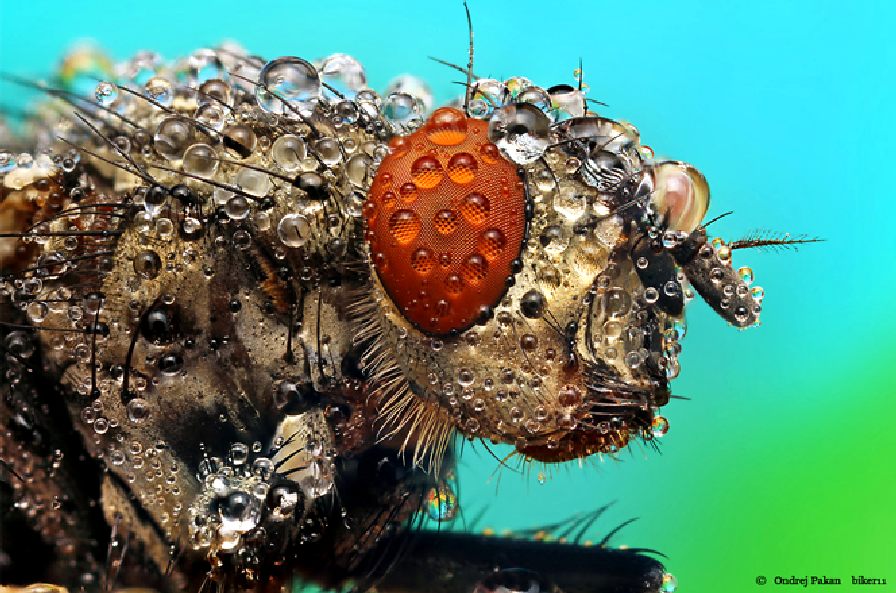
BIKER
11
- 'Red'
ONDREJ
PAKAN BIKER 11
How did you get into insect macro photography?
I've been photographing for 10 years. Digital photography was the most important impulse for me, because the result can be seen immediately.
At the beginning I was a typical enthusiastic photographer – hundreds of photographs and every one was perfect in my opinion.
But now I've become a member of various internet photo galleries and after some critical reactions
I've understood, that there have been a lot of things still to learn. I bought books, and step by step I created my own style and started to photograph insect macro. I felt that this is the right way for me.
Talk us through how you set up and take a shot.
It is "simple". It is best to go out in the early morning around 5 - 5,30 hrs. It must be coolish ( 6-10 C) and dewy. Insects will rise at dawn, with a bit of luck.
You need to like and be kind to insects, because I take pictures only with live insects. I use a Canon 40 D with a Canon mp-e 65 1-5x and a Canon flash 480II with a hand made Diffuser. The most important aspect of macro is light. The secret to good macro is cardinal light.
DOF (depth of focus) is very small in macro and so you need to arrange 2 or more pictures to get a good looking shot.
I then Photoshop my images – some of them are made from 2 pictures - and then I sharpen and contrast them a bit – it takes around 20-25 minutes.
What draws you to the medium of insect macro photography?
It's another world, which can be seen under our feet. We can discover a world of small monsters. Each fly, bee and spider is a perfect predator or a warring victim in this empire.
It's always a big surprise for me to find out how many species, forms and colors exist in this kingdom. I see the things around me a bit differently after each visit in this micro-world. I try to look at them in their own way. It's very funny. 99
INSPIRATION - APRIL 6 2016 - 16 MIND BLOWING EXAMPLES OF MACRO PHOTOGRAPHY Are you looking for some interesting and out of the ordinary project ideas for your Mind Blowing Insect Macro Photography? now you are in the right place, because today 99Inspiration will share extraordinary examples
of the macro photography of insects.
Macro photography is a popular subject and for good reason. Getting in close on a subject is a good way to look, and think, about it a bit differently.
Macro technique is not so simple, it does require some tricks to get beautiful pictures.
In the previous posts 99inspiration have discussed about Easy Macro Photography Tips And
Tricks. Insects are great subjects for macro photography. Getting in close on something that’s so tiny yet still living makes it really feel like there’s a whole different world there. Insects are trickier, since they’re mobile and unpredictable. Try photographing early in the day or late in the evening as they tend to be a bit more restful at these times. You can also catch macro photos with your
smart-phone, you just need to source some additional tools.
Here are 16 Mind Blowing Examples of Insect Macro Photography to get your creativity
going: By
Fleoops
Despite their reputation as pests, the trillions of insects, bugs, and spiders that inhabit the Earth can make some of the most fascinating and dramatic close-up photography subjects. Insects and their tiny environments offer the macro photographer an unlimited amount of color, texture, and physical architecture to explore. They are as unique as we are, and they are obviously much more plentiful. As an added bonus, you won’t even have to get a “model release” after you’ve photographed them! During most months of the year, bugs can be found just about everywhere, and most make very willing
subjects if you just learn how to find, approach, and compose them. 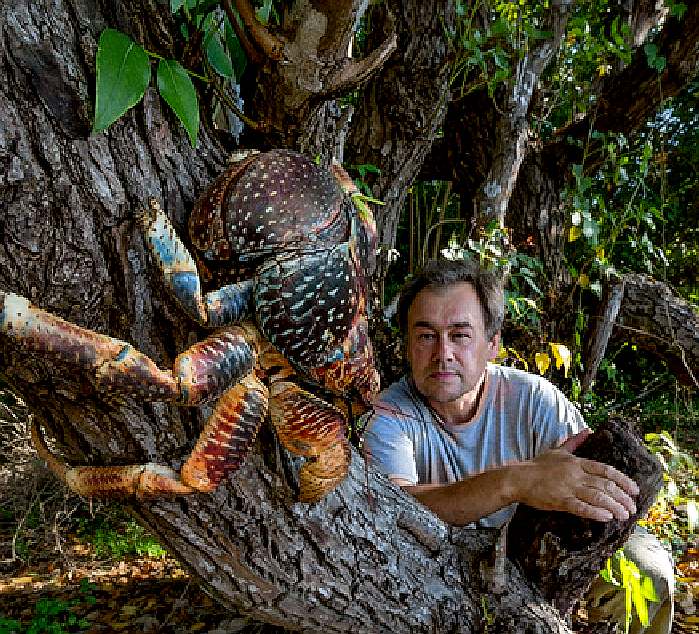
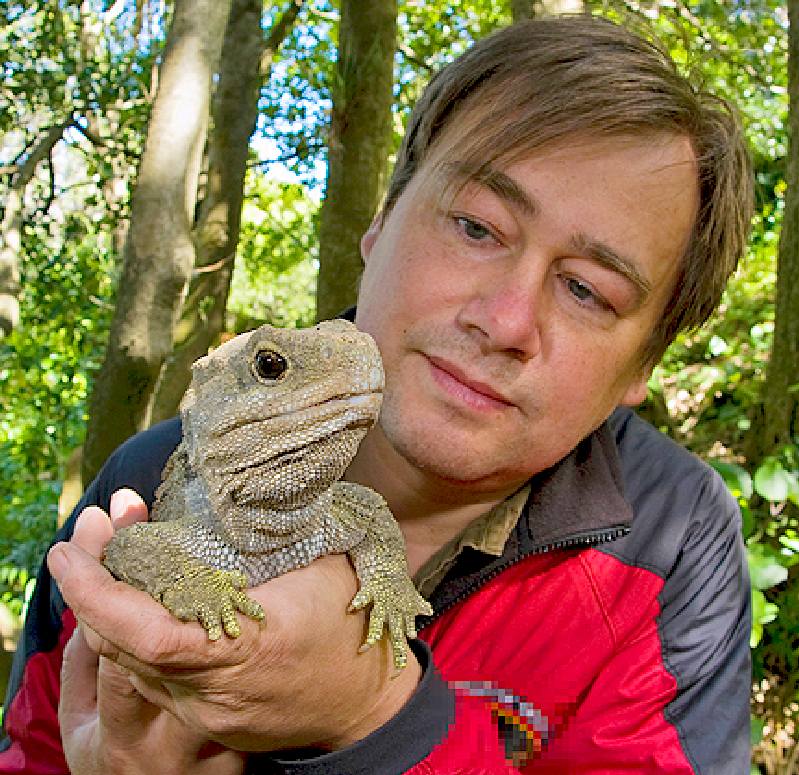
PIOTR
(PETER) NASKRECKI
- Piotr is an entomologist, photographer and author, based at the Museum of Comparative Zoology, Harvard University (Cambridge, MA, USA.). He received his M. Sc. degree in Zoology from the A. Mickiewicz University in Poznan, Poland;, and a Ph.D. in Entomology from the University of Connecticut, Storrs, CT. Between 2002 and 2009 Piotr served as Director of the Invertebrate Diversity Initiative at the Center for Applied Biodiversity Science at Conservation International, Washington, D.C. His research focuses on the evolution of katydids and related insects, and the theory and practice of nature conservation.
As a photographer, Piotr strives to promote appreciation and conservation of invertebrate animals – insects, arachnids, and their kin – by capturing both their beauty and roles as vital, often critically important members of the Earth’s ecosystems. He is one of the founding members of the International League of Conservation Photographers (ILCP).
Piotr is the author of over 30 scientific, peer-reviewed papers and book chapters, and his photographs and nature writing have been published in a number of national and international publications, including The Smithsonian Magazine, Natural History, National Wildlife, National Geographic, BBC Wildlife Magazine, BBC Knowledge, Terre Sauvage, Time magazine, Ranger Rick, and many others. His book “The Smaller Majority” (Harvard University Press 2005) illustrates a multitude of threats faced by invertebrate animals, whereas his most recent book “Relics: Travels in Nature’s Time Machine” (University of Chicago Press 2011) explores ancient organisms and ecosystems of the globe. Piotr’s photography has been exhibited in numerous venues, including the American Museum of Natural History in New York, The Natural Museum in London, Harvard Museum of Natural History, Aquamarine Fukushima (Japan), and others.
ABOUT
COPYRIGHT Works
of "art" benefit from copyright protection the moment it is created and fixed in a tangible form that it is perceptible either directly or
indirectly with the aid of a machine or device. In order to qualify as
being tangible a work has to be precise and unaltered. Altered art is no
longer tangible depending on the alteration, but if additional art is
included or a picture is cropped or of a different quality and general
makeup; for example if the coloration is changed markedly - or if there is
a combination of these changes, then a fresh copyright is generated in favor
of the "artist" creating the newer art. Examples
of original artworks relating to insects that are purported to be registered are: Number:
VAu 1-126-461
Number: VAu 699-806
Number: VAu 962-461
Number: VAu 979-301 Unfortunately,
unlike a trademark that is shown at the Trademarks Registry, you cannot actually see these works on the US Copyright site, so that it
is difficult to be able to compare works that come up in web searches to
be sure of authorship. Try this for yourself, all you get is a reference
number, author name and address - but no picture. Indeed, there is a fee
attaching to the obtaining of copies of the registered art and serious
delays in receipt, should you need a copy of any registered art - for
example, for impending litigation. It may be cheaper to force the other
side to provide a copy of the art for you to compare - and then to check
with the Copyright Office: PRODUCTION
IN THE CASE OF LITIGATION The
US Copyright Office will provide certified or uncertified copies of published or
unpublished works deposited in connection with a copyright registration and held in the Office’s custody only when one of
the following three conditions has been met:
1 Written authorization is received from the copyright claimant of
record or the owner of any of the exclusive rights in the copyright, as long as this ownership can be demonstrated by written
documentation of the transfer of ownership. If the transfer of the copyright is recorded
in the Copyright Office, please include, if possible, the volume and page numbers and approximate year of recordation.
Without that information, a search of the Copyright Office files will be necessary, and a search fee will be required.
2 The Copyright Office Litigation Statement Form is completed and
received from an attorney or authorized representative in connection with litigation, actual or prospective,
involving the copyrighted work. The following information must be
included in such a request: (a) the names of all parties involved and
the nature of the controversy, and (b) the name of the court in which the actual case is pending. In
the case of a prospective proceeding, the requestor must give a full
statement of the facts of controversy in which the copyrighted work is involved, attach any letter or other document that supports the claim
that litigation may be instituted, and make satisfactory assurance that the requested reproduction will be used only in
connection with the specified litigation. Contact the Records Research
and Certification Section for a Litigation Statement Form. This form must be used. No substitute will be permitted. The form must contain an
original signature and all information requested for the Copyright
Office to process a request.
3 A court order is issued for a reproduction of a deposited article, facsimile, or identifying portion of a work that is the subject of
litigation in its jurisdiction. The order must be issued by a court having jurisdiction over a case in which the copy is to be submitted as
evidence.
A request for copies of works deposited in connection with a copyright claim should be accompanied by whatever material is necessary to show
that one of the three conditions given above has been met. Library of Congress
Copyright Office-LD
101 Independence Avenue SE
Washington, DC 20559-6400 Library of Congress
Copyright Office-COPUBS
101 Independence Avenue SE
Washington, DC 20559 Copyright RRC
P.O. Box 70400
Washington, DC 20024
tel: (202) 707-6787 or 1-877-476-0778 (toll free)
fax: (202) 252-3519 Email:
copycerts@loc.gov ALEX
WILD'S COPYRIGHT
REGISTRATIONS
LINKS
& REFERENCE www.copyright.gov https://www.ephotozine.com/article/6-top-insect-macro-photographers-19980 https://www.99inspiration.com/2016/04/16-mind-blowing-examples-of-insect-macro-photography/ http://farrell.oeb.harvard.edu/people/piotr-naskrecki http://today.uconn.edu/2011/11/conservation-biologist-takes-readers-on-journey-through-time/ http://www.diyphotography.net/the-comlete-guide-for-photographing-live-insects-at-home/ http://extreme-macro.co.uk/catching-insects/ https://biomimicry.org/ed-summit/presenter-bios/# http://www.insectphotography.com/ http://www.amateurphotographer.co.uk/technique/macro_photography/macro-insect-photography-nadav-bagims-bug-wonderland-56897 Photo
credit A Wild: Jo-Anne Holley http://ucanr.edu/blogs/blogcore/postdetail.cfm?postnum=10052 http://www.facebook.com/alex.wild.758
https://twitter.com/Myrmecos http://myrmecos.net/ http://www.alexanderwild.com/
http://ucanr.edu/blogs/entomology/index.cfm
http://ucanr.edu/blogs/blogcore/postdetail.cfm?postnum=10052
ANTICS
- ARDUINO
- ARMOUR
- ARTWORK
- BIOLOGY
- BLACK
BOX - COMPUTERS - ELECTRONICS - ENERGY - FRAME -
HEAD - JAWS -
JIMMY
WATSON - KITS -
LEGS - MECHANICS
- MOTORS - MOVIE
- PHOTOGRAPHY - RASPBERRY
Pi - R/C
ROBOTICS
- DRONE -
SENTRY - SOFTWARE -
SOUND
PROOFING - SPEED -
SUSPENSION - TAIL
- WEAPONS
- WARGAMING
DINOSAURS
- DOLPHINS
- HUMANOIDS
- RAYS
- SHARKS
- WHALES
ARDUINO
- ARM
HOLDINGS - BEAGLEBOARD
- MBED
- PCBS - PICAXE
- RASPBERRY
PI
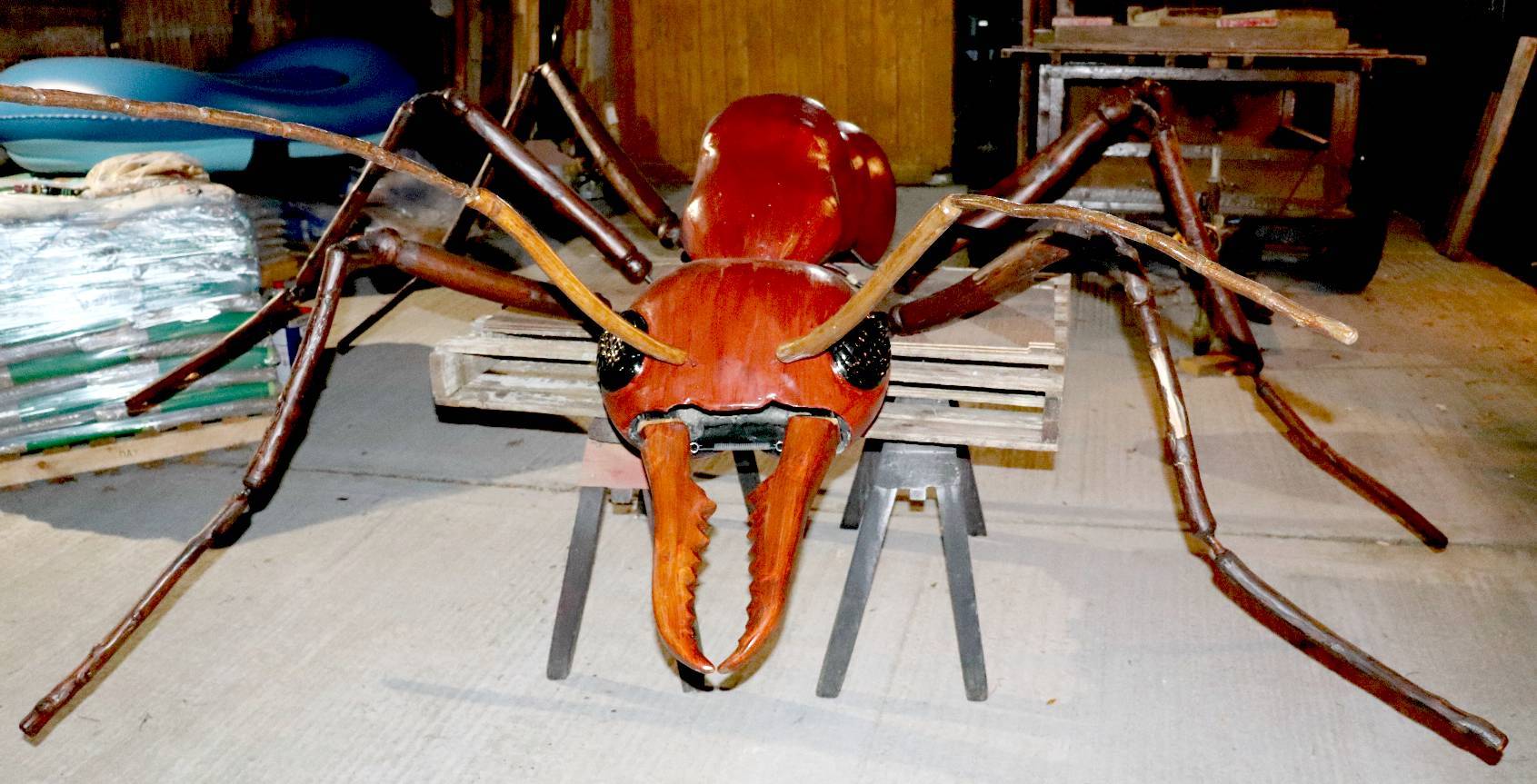
A
Sectasaur™ (thawed) - now on permanent display at Herstmonceux
Museum, in Sussex, England.
|























